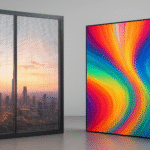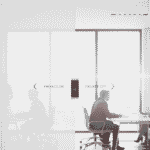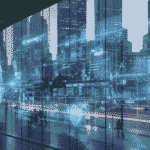In the ever-evolving landscape of modern architecture, sustainability has become a pivotal focus. As we strive to create buildings that are not only aesthetically pleasing but also environmentally responsible, innovative materials like switchable glass are making a significant impact. In this article, you will explore a detailed guide on Switchable Glass for Sustainable Buildings.
What is Switchable Glass?
Switchable glass, also known as smart glass, is a dynamic material that can change its light transmission properties when voltage, light, or heat is applied. This ability to modulate transparency allows it to control the amount of light and heat passing through, making it an ideal choice for energy-efficient and eco-friendly buildings.
Types of Switchable Glass
Switchable glass comes in various forms, each with unique properties and applications. Let’s explore the different types:
Electrochromic Glass
Electrochromic glass changes its opacity in response to an electric current. This type of glass can be tinted to block out light and heat, reducing the need for artificial cooling and lighting. It’s particularly useful in environments where managing sunlight and temperature is crucial, such as office buildings and residential homes.
Thermochromic Glass
Thermochromic glass responds to temperature changes. When the glass heats up, it becomes less transparent, thereby blocking solar heat gain and keeping interiors cool. This self-regulating property makes it ideal for climates with significant temperature variations, offering a passive solution to thermal management.
Photochromic Glass
Photochromic glass darkens in response to sunlight, much like transition lenses for eyeglasses. It adjusts automatically to the intensity of sunlight, providing comfort and reducing glare. This type of glass is especially beneficial in environments with fluctuating light conditions, such as atriums and skylights.
Polymer Dispersed Liquid Crystal (PDLC) Glass
PDLC glass uses liquid crystal technology to switch between transparent and opaque states. It’s often used for privacy applications, such as in-office partitions or bathroom windows. This type of glass can be controlled manually or automatically, providing flexibility in various settings.
Benefits of Switchable Glass in Sustainable Buildings
Let’s explore the benefits of Switchable Glass in Sustainable Buildings:
Energy Efficiency
Enhances energy efficiency by reducing solar heat gain and minimizing the need for artificial lighting. By controlling the amount of sunlight entering a building, it helps regulate interior temperatures, reducing reliance on HVAC systems. This not only lowers energy consumption but also decreases carbon emissions, making it a key player in sustainable building practices.
Enhanced Comfort and Privacy
One of the standout features is its ability to provide occupants with customizable levels of privacy and comfort. Users can adjust transparency from transparent to opaque at the touch of a button, offering instant privacy when needed without sacrificing natural light. This flexibility is particularly beneficial in residential settings, office environments, and healthcare facilities where privacy and comfort are paramount.
Aesthetic Appeal
Beyond its functional benefits, it adds a contemporary and sophisticated look to buildings. Its seamless integration into architectural designs enhances the overall aesthetic appeal, making it a preferred choice for modern constructions aiming for both sustainability and style. Whether used in windows, partitions, or facades, it contributes to a sleek and cohesive building design.
UV Protection
Effectively blocks harmful UV rays, protecting interiors from sun damage. This UV protection not only preserves furnishings, artwork, and flooring but also safeguards occupants’ health by reducing exposure to ultraviolet radiation. It’s a valuable feature in spaces like museums, galleries, and residential homes where UV-sensitive materials and human health are considerations.
Sound Insulation
In addition to controlling light and privacy, it can enhance acoustic comfort by providing sound insulation. Reduces noise transmission from outside sources, creating quieter indoor environments that promote concentration, relaxation, and productivity. This acoustic benefit is particularly advantageous in urban areas or buildings located near busy roads or airports.
Flexibility in Design
Architects and designers appreciate the flexibility that offer in building design. Its ability to transform from transparent to opaque allows for dynamic space configurations that adapt to changing needs and preferences. This versatility makes it suitable for various applications, from open-plan offices and conference rooms to residential kitchens and bathroom partitions.
Durability and Longevity
High-quality is durable and built to last, requiring minimal maintenance over its lifespan. Its robust construction and resistance to wear ensure reliable performance and longevity, reducing lifecycle costs associated with replacements and repairs. This durability supports sustainable building practices by minimizing material waste and resource consumption.
Health Benefits
Contributes to occupant health and well-being by optimizing natural light and ventilation. By allowing ample daylight in interior spaces, it enhances mood, productivity, and overall health. Improved ventilation control further enhances indoor air quality, creating a healthier environment for building occupants.
Applications of Switchable Glass
Switchable glass is versatile and can be used in various types of buildings, each benefiting uniquely from its properties.
Residential Buildings
In residential settings, is used to create smart windows that offer homeowners privacy, energy efficiency, and aesthetic appeal. It’s commonly installed in bedrooms, bathrooms, and living areas where privacy is essential, while still allowing natural light to penetrate the interior spaces. The ability to control glare and UV exposure enhances comfort and protects furnishings.
Commercial Buildings
Finds extensive use in commercial settings such as offices, retail stores, and hotels. In office buildings, it’s used for meeting room partitions, office dividers, and exterior facades to enhance privacy and optimize natural light. Retailers utilize display windows that attract customers during the day and provide security and privacy at night. Hotels incorporate guest rooms and public areas to offer guests customizable privacy options and energy-efficient solutions.
Healthcare Facilities
Improves patient comfort and operational efficiency in healthcare facilities. In patient rooms, it provides privacy without compromising on natural light, contributing to a healing environment. Surgical suites benefit from maintaining sterility and privacy during procedures. Additionally, partitions in waiting areas and administrative offices enhance privacy and patient confidentiality.
Educational Institutions
Educational settings such as schools and universities utilize in classrooms, libraries, and study areas. In classrooms, it supports varied teaching methods by controlling glare and optimizing daylight levels, creating conducive learning environments. Libraries and study areas benefit from partitions that offer privacy for individual study while maintaining an open, collaborative atmosphere.
Hospitality Industry
Hotels and resorts leverage guest room windows, meeting rooms, and spa areas to enhance guest comfort and privacy. Windows provides guests with customizable views and privacy options, contributing to a personalized guest experience. In conference rooms and event spaces, partitions allow for flexible use of space while maintaining aesthetic continuity and energy efficiency.
Retail Environments
Retailers use storefronts and display windows to create dynamic and engaging shopping experiences. During business hours, transparent showcases merchandise and attracts customers with vibrant displays. After hours, opaque enhances security and protects store interiors from unauthorized access and vandalism.
Transportation
Integrated into transportation vehicles such as buses, trains, and aeroplanes to improve passenger comfort and energy efficiency. In aircraft cabins, windows reduce glare and regulate cabin temperature, enhancing passenger comfort during flights. In public transport vehicles, partitions provide privacy for passengers while maintaining an open and spacious interior.
Public Spaces
Public spaces like museums, galleries, and cultural centres benefit from preserving artwork, artefacts, and exhibitions. Windows and skylights control UV exposure and natural light levels, protecting delicate materials and enhancing visitor experiences. In exhibition spaces, partitions create flexible layouts that accommodate changing exhibits and events, ensuring optimal viewing conditions and environmental control.
Installation and Maintenance
Proper installation and maintenance are key to maximizing the benefits of switchable glass.
Professional Installation
To ensure optimal performance, this glass should be installed by professionals who are experienced with this technology. Proper installation is crucial for the functionality and longevity of switchable glass systems.
Maintenance Tips
Regular cleaning and occasional checks of the electrical components will keep this smart glass functioning effectively for years. It’s important to follow the manufacturer’s maintenance guidelines to prevent issues and ensure long-term performance.
Cost Considerations
While the initial investment in switchable glass can be high, the long-term savings often justify the expense.
Initial Investment
The upfront cost includes the price of the glass and installation fees. However, government incentives for sustainable building materials can help offset these costs. It’s important to consider the long-term benefits and savings when evaluating the initial investment.
Long-Term Savings
Over time, the energy savings and reduction in HVAC costs can lead to significant financial benefits, making this smart glass a smart investment. The durability and low maintenance requirements also contribute to long-term savings.
Conclusion
We have covered a detailed guide on Switchable Glass in Sustainable Buildings. This glass represents a leap forward in sustainable building design. Its ability to enhance energy efficiency, comfort, and aesthetics makes it a valuable addition to modern architecture. As technology continues to advance, we can expect switchable glass to play an even more significant role in creating greener, more sustainable buildings.
FAQs
What are the main advantages of using switchable glass in sustainable buildings?
It offers several benefits, including enhanced energy efficiency by controlling heat and light, improved comfort with adjustable transparency, and privacy on demand without the need for blinds or curtains.
Is switchable glass suitable for all types of buildings, including residential and commercial structures?
Yes, It is versatile and can be used in various settings. It’s commonly installed in residential homes, office buildings, healthcare facilities, and educational institutions to improve sustainability and user comfort.
What maintenance is required for switchable glass systems?
Regular cleaning with mild, non-abrasive cleaners and periodic checks of electrical components are recommended to ensure the glass maintains its functionality over time. Professional maintenance can also extend its lifespan.
Are there any drawbacks or considerations when installing switchable glass in buildings?
While it offers numerous benefits, initial costs can be higher compared to traditional windows. Proper installation by experienced professionals is crucial, and compatibility with building automation systems should be considered for optimal performance.
Can switchable glass be used in hot climates where sunlight and heat are significant concerns?
Yes, it is particularly beneficial in hot climates. It can reduce solar heat gain when tinted and minimize cooling costs by optimizing natural light while controlling glare.





